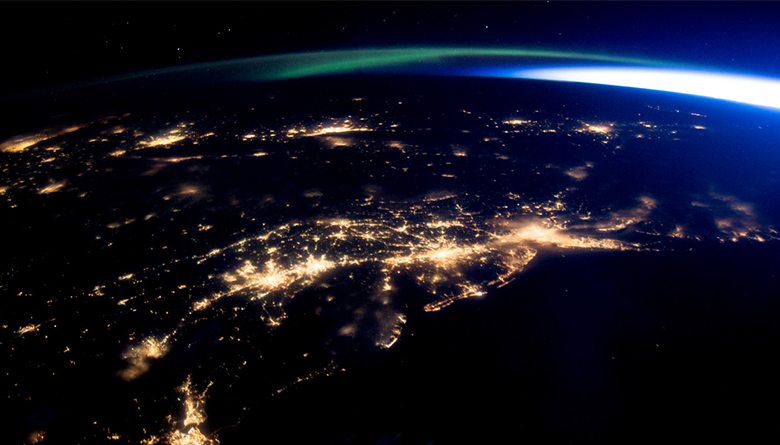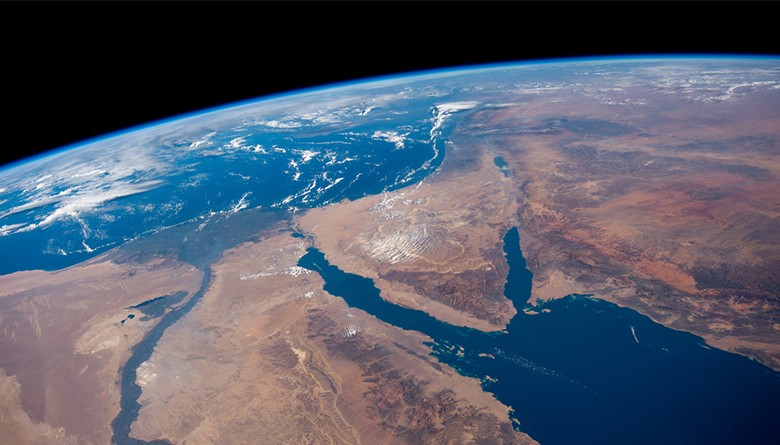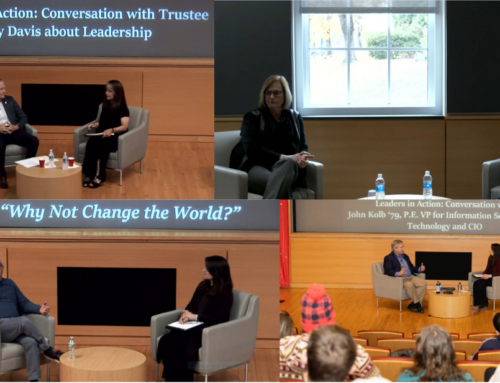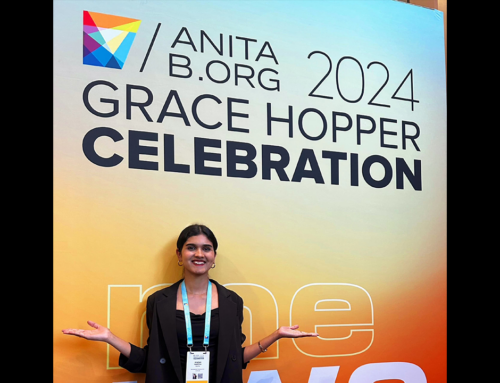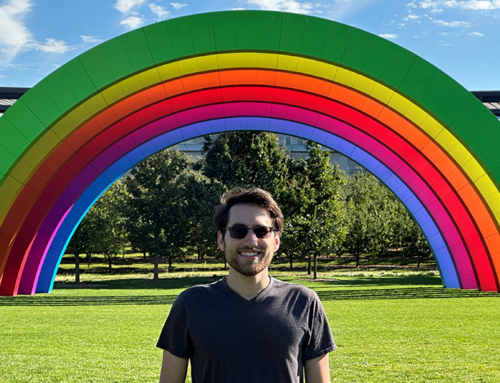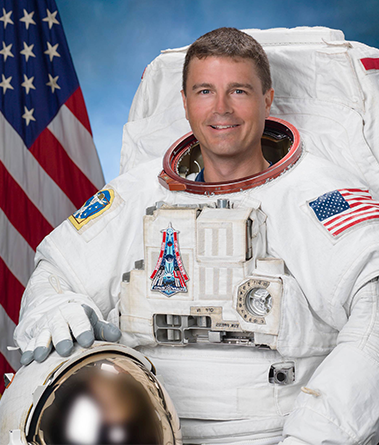 Gregory Reid Wiseman ’97 served as flight engineer aboard the International Space Station (ISS) for Expedition 41 in 2014-2015. During the 165-day mission, Wiseman and his crewmates spent hundreds of hours conducting valuable scientific research in areas such as human physiology and medicine, physical science, biology and biotechnology, Earth science, and astrophysics. They completed a record 82 hours of research in a single week. Wiseman also fostered a strong social media presence throughout his mission by sharing photos, personal tweets, and short videos about life aboard the station. This was Wiseman’s first spaceflight, which also included almost 13 hours of spacewalking.
Gregory Reid Wiseman ’97 served as flight engineer aboard the International Space Station (ISS) for Expedition 41 in 2014-2015. During the 165-day mission, Wiseman and his crewmates spent hundreds of hours conducting valuable scientific research in areas such as human physiology and medicine, physical science, biology and biotechnology, Earth science, and astrophysics. They completed a record 82 hours of research in a single week. Wiseman also fostered a strong social media presence throughout his mission by sharing photos, personal tweets, and short videos about life aboard the station. This was Wiseman’s first spaceflight, which also included almost 13 hours of spacewalking.
Why did you want to become an astronaut?
I want to see people living on the moon and Mars, and I hope NASA finds life beyond Earth. As a kid, I was fascinated with all things aviation. I didn’t dream of being an astronaut but I definitely wanted to fly. The Challenger disaster certainly had an impact on me. As I got older, I enjoyed math and decided to attend Rensselaer to learn more about engineering. In the Navy, I found the perfect blend of flying, math, and engineering as a test pilot. My career at NASA is an extension of that work. There is something special about the human-in-the-loop in every great adventure.
What is the purpose of doing scientific research on the ISS?
The space station is designated as a U.S. National Laboratory, to maximize its use for benefitting life on Earth. This unique laboratory is available for use by academic institutions, commercial companies, and other government agencies such as the National Institutes of Health, National Science Foundation, and the Department of Defense.
I personally look at the scientific research on ISS from three main perspectives:
First, we need to learn how to operate away from the planet. The space station, in low Earth orbit, is our first step in that journey. We are learning the fundamentals of life support, water reclamation and recycling, human performance, etc. The space station allows relatively quick access to and from orbit so we can test, learn, iterate, and retest.
Second, research in microgravity allows us to look at our world without the effect of gravity. This does some very interesting things in general physics and allows researchers a chance to anchor models, study cells in their spherical shape, test innovative ways to move fluids, burn fuels, etc. In my six months on orbit, my crew was a part of over 300 science projects.
Third, we get to study the human. In great depth. The astronaut is a perfect research subject. Our blood, bone density, muscles, eyes, skin, microbiome, heart, it all changes in microgravity. We’re enabling humans to live and thrive as we explore deeper into the solar system. Some of the changes we see in astronauts in space resemble rapid aging. By studying these changes, we hope to improve life on Earth by providing better understanding of aging-related immune, bone, and muscle disease processes, which may lead to new therapies and treatments.
Research on the ISS improves knowledge about the effects of long-term space exposure on the human body. How will that knowledge be used to improve human space exploration of the future?
We have already learned so much through long-duration missions to the space station. We now know how to stay fit, how to stay strong, how to keep our bone density stable, how to maintain a healthy diet and weight, and how to stay emotionally balanced. All of these required time and experience to master, and we now have outstanding countermeasures in place for our current astronauts. Yet, we are still learning nuances about the human body. Scott Kelly’s year in space showed his telomeres actually elongated during his mission. Vision changes have affected many astronauts. Every mission brings new questions and answers about the changes in our bodies when we live in microgravity for six to 12 months. This knowledge, coupled with a better understanding of radiation thanks to probes on the moon and Mars, will help us ensure we can survive in deep space and be healthy when we get to our destination.
You were prolific on Twitter during your stay on the ISS, sharing stunning photos and incredible stories. What do you think it is about space that so captures the public imagination?
Humans are curious creatures and we all want to experience things for ourselves. Social media allowed me to show a side of spaceflight that hadn’t been shown in great depth before. Our Earth is incomprehensibly beautiful and I was able to add my personal thoughts onto each picture. Floating is great fun and yields some funny nuances in day-to-day life. Working on the space station is always interesting. I think people enjoyed a bit of an uncensored view into the life of an astronaut in low Earth orbit. I certainly enjoyed sharing that experience. My very first thoughts after getting into orbit and having a look at our planet below were—no photo does this justice, and every single person should get to come see this for themselves.
The ISS—the largest international scientific undertaking of this century—has set a precedent for international cooperation. Is that level of cooperation difficult to maintain?
This level of cooperation could be categorized as difficult, but most of us view it as relatively easy now that we are almost two decades into the space station’s life and definitely to the benefit of the overall mission. Our partners are outstanding across the board. Getting to work on something operational with the Russians, Europeans, Canadians, and Japanese has been a highlight of my life. We all learn from each other every day. When politics are put aside, at the operator level, we know we are one unified team working to accomplish the mission for the benefit of all humankind.
What is the future of space exploration?
We are in a golden age of space exploration. Period. The International Space Station has enabled many commercial companies to get involved. I just read that approximately 11 percent of all spacecraft launching from Earth are headed to the station. That is remarkable. Building on the successes of the International Space Station, our next destination is the moon. We are going soon, we are going to learn, and then we are going to Mars. The moon and Mars will only be possible with international cooperation on a global scale, and government-commercial cooperation on a national scale. It is going to be a wild ride!
Learn more about Reid Wiseman.
Watch a video of Wiseman’s live chat from the ISS with the Rensselaer community in 2014 (Reid appears at 35:30).



